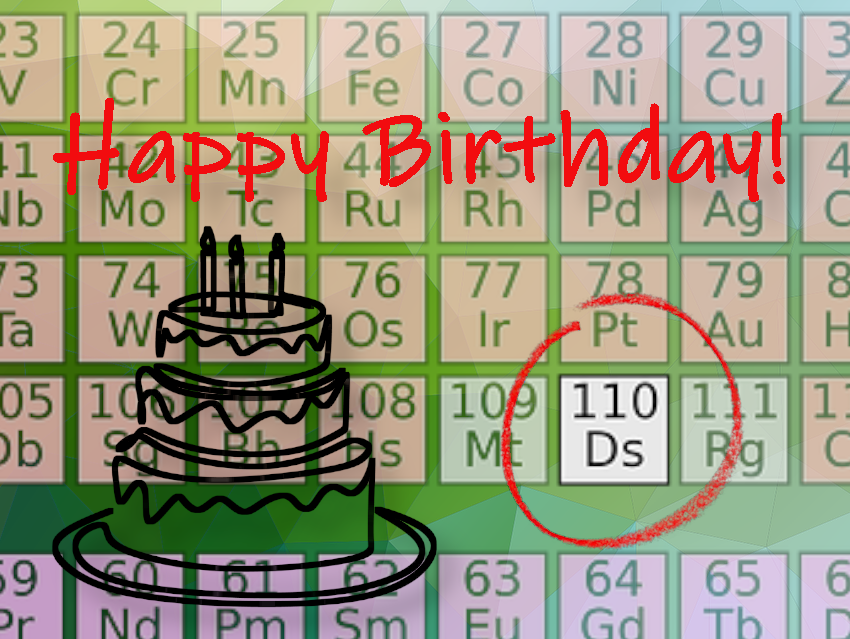The element darmstadtium (Ds), with atomic number 110, was first created on November 9, 1994, at the Institute for Heavy Ion Research (Gesellschaft für Schwerionenforschung, GSI) in Darmstadt, Germany, by Peter Armbruster and Gottfried Münzenberg, under the direction of Sigurd Hofmann. The researchers detected a single atom of the isotope 269DS by bombarding 208Pb with accelerated nuclei of 62Ni in a heavy ion accelerator.
![]()
Using an 120-meter-long ion accelerator, the team accelerated nickel ions to speeds of around 30,000 kilometers per second. Then they shot the nickel ions onto a thin foil of lead. The atomic nuclei of both elements have a total of 110 protons. Due to the high speed, the repulsion between the nickel and lead nuclei can be overcome, and, in very rare cases, the two fuse to form element 110.
269DS has a half-life of about 0,27 ms. It decays and transforms into other lighter elements in several stages, emitting an α particle each time. Using a sensitive detection system, the researchers were able to precisely measure these emitted α particles and thus clearly identify the new element.
There are currently 118 elements listed in the periodic table. Superheavy elements (SHE) are elements with a proton number (Z) of 104 or greater. The GSI created the elements 107 to 112 by bombarding elements 82 (lead) and 83 (bismuth) with moderately heavy projectile nuclei (Z = 24, 26, 28, and 30).
Darmstadtium is a highly radioactive synthetic element. In the meantime, 14 different isotopes of darmstadtium with atomic masses between 267 and 282 have been produced. 281Ds is the most stable known isotope. Ds is a d-block transactinide element, part of the 7th period in group 10. The element has not yet been chemically studied.
The name “darmstadtium” (Ds) was suggested by the GSI team to commemorate the city of Darmstadt, where the element was first synthesized. Initially, the element was called ununnilium (symbol Uun). The name is derived from the Latin name of the atomic number 110. On August 15, 2003, the name darmstadtium was accepted by the International Union of Pure and Applied Chemistry (IUPAC), and the element was officially named darmstadtium (Ds) on December 2, 2003. Maybe also a day to celebrate a birthday.
References
[1] S. Hofmann, V. Ninov, F. P. Heßberger, P. Armbruster, H. Folger, G. Münzenberg, H. J. Schött, A. G. Popeko, A. V. Yeremin, A. N. Andreyev, S. Saro, R. Janik, M. Leino, Production and decay of 269110, Z. Physik A – Hadrons and Nuclei 1995, 350, 277–280. https://doi.org/10.1007/BF01291181
[2] The discovery of element 110 at GSI – a report by Sigurd Hofmann, an element discoverer, Extract from the speech by Sigurd Hofmann given at the baptism of the element darmstadtium (from the naming ceremony brochure of the element darmstadtium that appeared on December 2, 2003). (accessed November 9, 2023)
[3] More on superheavy elements: https://www.chemistryviews.org/?s=superheavy+elements&orderby=relevance
α




